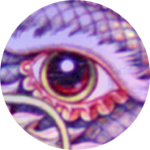Last Updated: 31st August, 2020 14:38 IST
The Shaolin Temple And Indian Monks!
A new book explores the ancient India that is preserved in the traditions, art, and architecture of China, as also in Mongolia, Korea and Japan, including the contribution of two Indian monks to the Shaolin temple and martial arts.
Written By
Press Trust Of India

A new book explores the ancient India that is preserved in the traditions, art, and architecture of China, as also in Mongolia, Korea and Japan, including the contribution of two Indian monks to the Shaolin temple and martial arts.
From the wandering monks of Asia to the temples and monasteries they visited; from the statues and frescoes in grottoes to those in museums; from the diverse ethnicities of the people to their common gods and goddesses, the book "On the Trail of Buddha: A Journey to the East" attempts to touch upon the ethos of the East Asian culture and its deep-rooted linkages with the Indian civilisation.
Beginning at Karakhoja, the erstwhile capital of Xinjiang, the book covers ancient cities along the Silk Road in China, the north-south trade axis that connects China with Mongolia, travels from Sichaun in south-western China to Mount Kailash and Lake Mansarovar, thereafter moving from south-eastern coastal China from Hong Kong to Shanghai, and then to Taiwan from Taipei to Kaohsiung.
From there, it moves to Korea and Japan. Traversing 98 destinations across 37 locations, the journey is a voyage of discovery across East Asia.
Deepankar Aron, an Indian Revenue Service officer, has put together his passions for photography and travel in this book, published by Niyogi Books.
'Damo' or 'Tamo', as he is popular in China, came to the Shaolin temple, 22 years after it was founded in 495 AD. Born in a royal family in Tamil Nadu's Kanchipuram, Damo, who is also known as Bodhidharma, meditated for nine years in a cave about four km from the temple, the book says.
"While it (the temple) was set up by the Chinese emperor of the Northern Wei dynasty in honour of the Indian monk Batuo, it was Damo who has been synonymous with the temple," the author writes.
Bodhidharma is believed to have brought the South Indian martial art form Kalaripayattu to China, where it was later modified into kung fu or wushu, he says.
"He created the 'muscle-bone strengthening exercises' widely known as the source of Shaolin kung fu. In an iron box left by Bodhidharma, after he passed away, there were two books on the subject," the book says.
According to Aron, there are thousands of monks who travelled spreading Buddhism across Asia. From Dafo of Leshan, the world's highest rock-cut Buddha to the Floating Temple of Itsukushima-Jinja in Japan, he writes about many World Heritage Sites and unique destinations.






 Reply With Quote
Reply With Quote